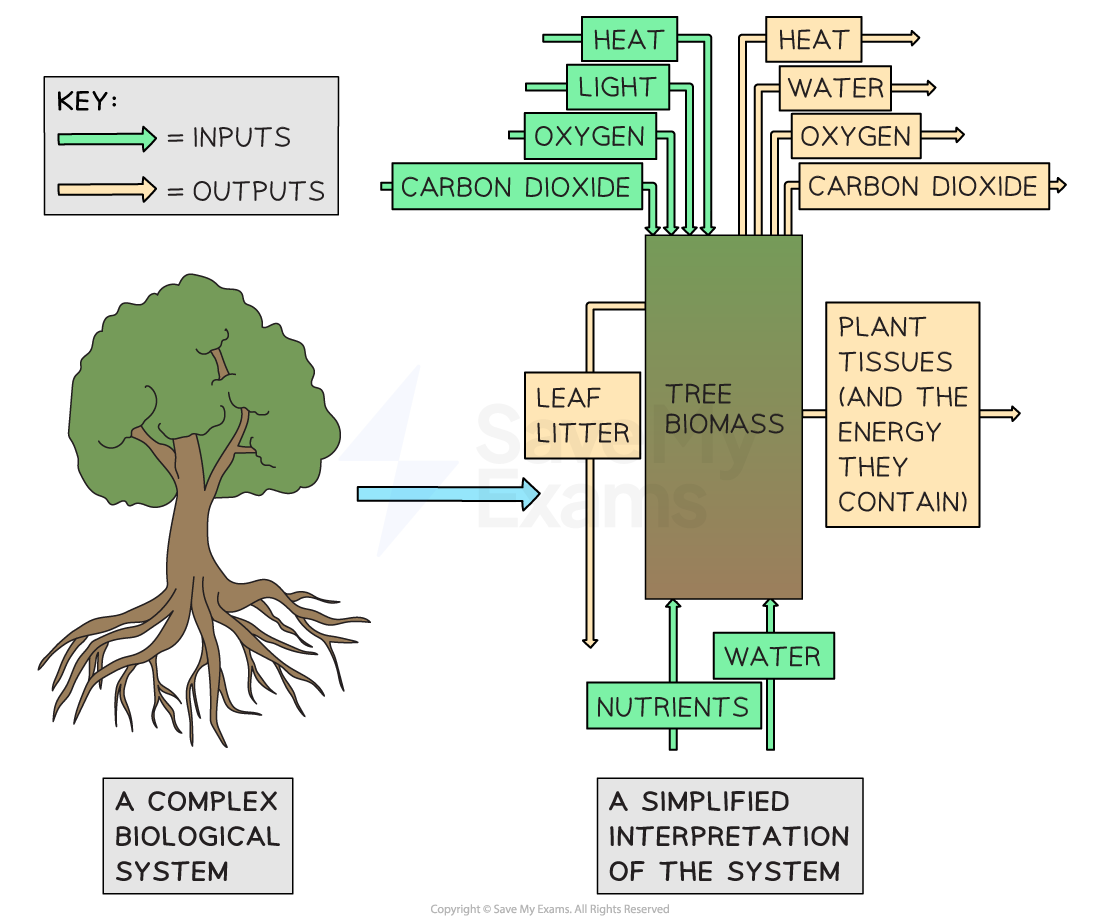Storages & Flows
- A system is comprised of storages and flows
- The flows provide inputs and outputs of energy and matter
- The flows are processes that may be either:
- Transfers (a change in location)
- Transformations (a change in the chemical nature, a change in state or a change in energy)
Transfers and Transformations
- These are two fundamental concepts in systems (and systems diagrams) that help to understand how matter and energy move through a system
- Transfers are the movement of matter or energy from one component of the system to another, without any change in form or quality
- For example, water flowing from a river to a lake is a transfer
- Transformations, on the other hand, involve a change in the form or quality of matter or energy as it moves through the system
- For example, when sunlight is absorbed by plants, it is transformed into chemical energy through the process of photosynthesis
- Transfers and transformations are often represented in systems diagrams by arrows that connect the different components of the system
- Arrows that represent transfers are usually labeled with the quantity of matter or energy being transferred (e.g., kg of carbon, kJ of energy), while arrows that represent transformations may include additional information about the process involved (e.g., photosynthesis, respiration)
- Systems diagrams can help to identify the key transfers and transformations that occur within a system and how they are interconnected
- By understanding these processes, it is possible to identify opportunities to improve the efficiency or sustainability of the system
- Transfers and transformations can occur at different scales within a system, from the molecular level to the global level
- For example, at the molecular level, nutrients are transferred between individual organisms, while at the global level, energy is transferred between different biomes


